
Start page
Guestbook
About me
Workshop
Gallery
Books
Diagrams
Links
Rambling through the net, looking for the next news devoted to origami, I came across a very interesting branch - ORIBANA. Actually, it is a cross of two Japan technics:
ORIGAMI + IKEBANA = ORIBANA
In other words, this is folding of flower arrangement from the paper. However, at the pure art of origami we do not use the glue, here it is actually inevitable. Every element is made with the technique of origami (flower, leaves) and next, all the elements are stiched to the stalk. After testing a few sorts of glue the most proper occured to be thermoglue (the glue from the pistol).
I found the most interesting flower compositons on page: www.origami.ru
(http://www.origami.ru/pho/1099ib.htm).
Despite they were presented without diagrams. I was fascinated enought
to come up with my own oribana.
Recently I have been preparing the decoration to celebrate the Teacher's
Day at school, where I work. On that occasion I decided to make a dozen
or so oribans to decorate rooms. The leitmotif of my oribana was the construction
from tubes with flowers on them (some of them were my own ideas, the other
ones were taken from the Russian page). As a matter of fact, they have
not got much in common with origami; they are simply rectangle paper mould
in scrools and sticked in different way, for example:



I used diagrams of flower found in the web, I have even modified some of them.
The most frequently used flowers are (diagrams available throug pressing
the icon of proper flower):
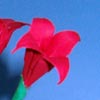 iris,
iris,

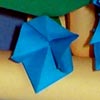

 flower that can be used separately, in groups or on the stalk, as a
hyacinth,
flower that can be used separately, in groups or on the stalk, as a
hyacinth,
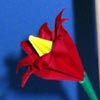

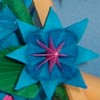 kusudama (modified),
kusudama (modified),
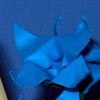

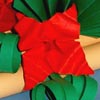 flower, taken from
the web, modified by me (I simplified it a little bit). Now it is far
more easier to fold and it can be used as a flower base, too,
flower, taken from
the web, modified by me (I simplified it a little bit). Now it is far
more easier to fold and it can be used as a flower base, too,
 rose,
rose,
 bells,
bells,
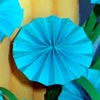 descriptive diagram:
we fold the paper (proportion 2:1) into 16 pieces and arrange into harmonics
(according to the earlier foldings). Next we fold it in half and make
a bilateral fan, the endings must be sticked.
descriptive diagram:
we fold the paper (proportion 2:1) into 16 pieces and arrange into harmonics
(according to the earlier foldings). Next we fold it in half and make
a bilateral fan, the endings must be sticked.
I made a lot of flower. Here they are:



A lot of leaves (many leaves, according to my own idea). They are very
easy and fast to be made:

Finally, it is high time to fold oribana. And here is the effect of my
hard and uphill, however, nice work:
");
}
?>
Further pages with oribanas:
http://www.oriworld.joi.com.br/english/oribana.php
http://www.origami.cz/Pratele/Vitova/oribana.html
http://oriland.com/
http://library.thinkquest.org/27152/res/oribana/oriba_g1.htm
http://www.geocities.com/orimtl/expo2000/expo2000-fleurs.html
http://homepage3.nifty.com/origamiflower/top.html
(lots of photos and instrucions)
http://members.cox.net/kimn105/
We can also find diagrams for this flowers in net and use them to make
ours oribanas:
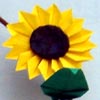 sunflower (diagram in part 2. Flowers, 3. Sunflower - 9 pages),
sunflower (diagram in part 2. Flowers, 3. Sunflower - 9 pages),
-
 jasmine,
jasmine,
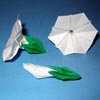 morning glory (diagram inpart 2. Flowers, 9. Morning glory - 6 pages),
morning glory (diagram inpart 2. Flowers, 9. Morning glory - 6 pages),
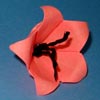 bell with five petals,
bell with five petals,
 star (blue as a mountain columbine), (diagram in part 2. Flowers, 3.
Blue star - 6 pages),
star (blue as a mountain columbine), (diagram in part 2. Flowers, 3.
Blue star - 6 pages),
 rose,
rose,
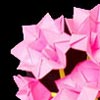 lotus,
lotus,
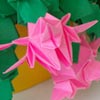 cactus.
cactus.
Thanks for translation to Diana Janoska.